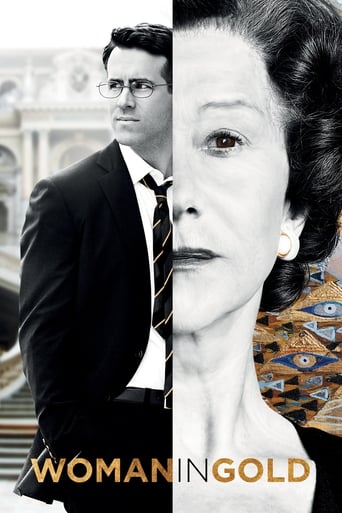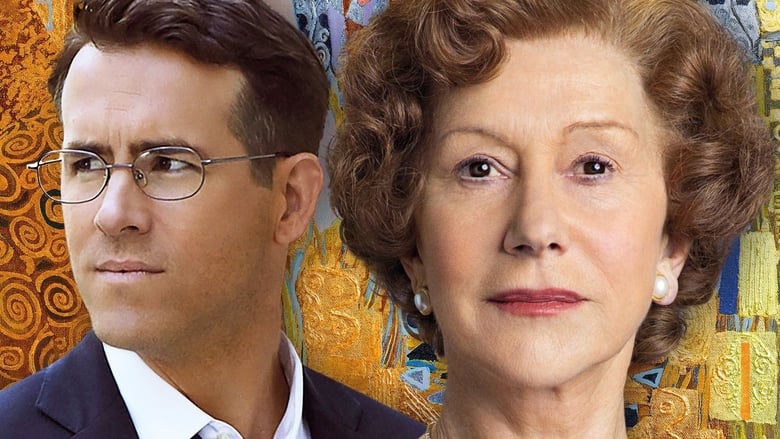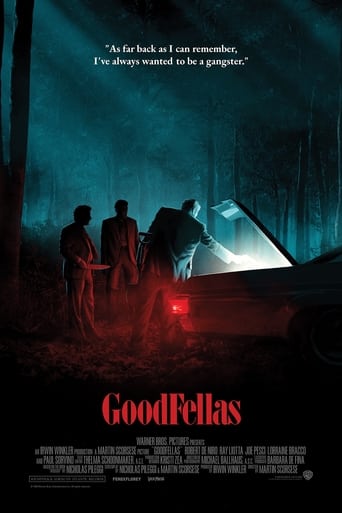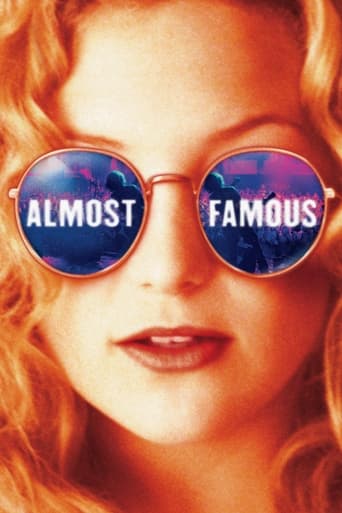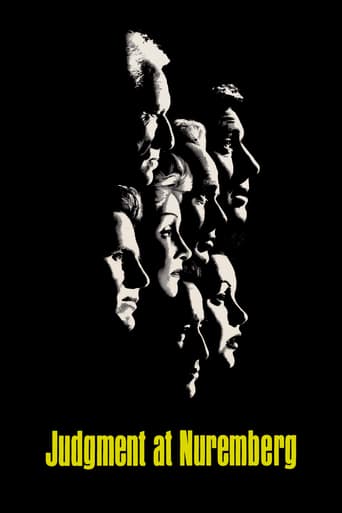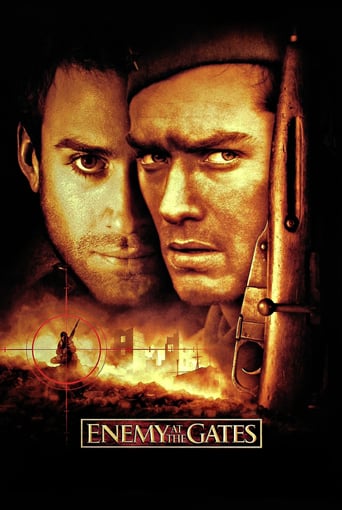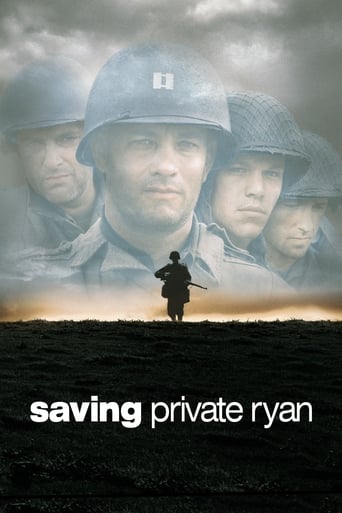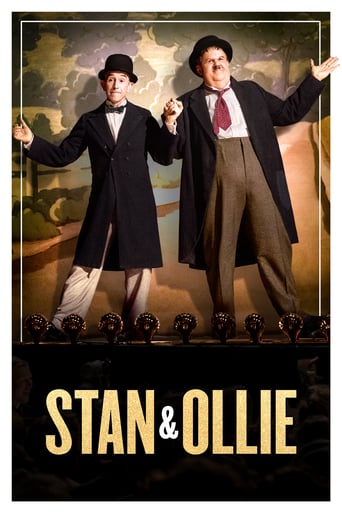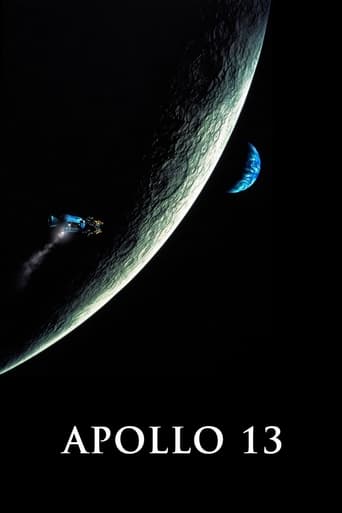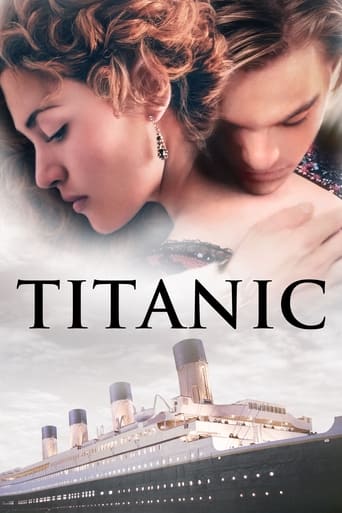Woman in Gold (2015)
Maria Altmann, an octogenarian Jewish refugee, takes on the Austrian government to recover a world famous painting of her aunt plundered by the Nazis during World War II, she believes rightfully belongs to her family. She did so not just to regain what was rightfully hers, but also to obtain some measure of justice for the death, destruction, and massive art theft perpetrated by the Nazis.
Watch Trailer
Free Trial Channels
Cast


Similar titles
Reviews
Load of rubbish!!
Brilliant and touching
The story, direction, characters, and writing/dialogue is akin to taking a tranquilizer shot to the neck, but everything else was so well done.
Great movie. Not sure what people expected but I found it highly entertaining.
"When people see the famous portrait, they see a masterpiece by one of Austria's finest artists. But I see a picture of my aunt, a woman who talked to me about life while I brushed her hair in her bedroom." Truer and more earnest words could not have been spoken better than that of Austrian- Jewish holocaust survivor, Maria Altmann, known for successfully reclaiming some of her family paintings from the Austrian Government that were abducted by the Nazis. Today's film tackles that subject, and upon viewing it for the first time, it managed to speak above higher levels of sincerity and personal attachment that I don't see often in cinema.The first notable element that the film portrays beautifully is the character of Maria Altmann herself. Growing up as a child in the mid-20s, she saw her aunt Adele Bloch-Bauer being used to create the grim yet beauteous woman in the portrait known as Woman in Gold. Adele had a few portraits made of her by Austrian symbolist painter Gustav Klimt at age 25 through negotiations by her husband. Considering how much the portrait of her aunt meant to Maria personally, it makes sense that she would feel disgusted to see how this painting was used in later years. In fact, throughout the film, we see flashbacks of Maria's childhood that perfectly immolates her lifespan from childhood to young adulthood. Given how close Maria felt to her aunt as elegantly displayed in these flashbacks, this makes the symbolism of the gold painting all the more powerful. Klimt's intention was to showcase a "swirling gown within a blaze of gold rectangles, spirals and Egyptian symbols", creating her aunt as the personification of Vienna's Golden Age. After her aunt died, the family would look upon the paintings through divineness, leaving Maria only with memories of the paintings, before they were taken away. This is what presents the "Portrait of Adele Bloch-Bauer I" as a symbol of all that her family had lost.One aspect that the film never shies away from is the horrible treatment of European Jews. As mentioned before, the film often depicts flashbacks of Maria's struggles in Austria. Not just the treatment of "inferior" people, but by also demonstrating Nazis taking family possessions away from their original owners and would never have them restored. Maria's story compliments this unfortunate event, but the idea that it's best to let go of the past plays a notable contrast, despite how unjustified the act was. Sure, those who may not have been affected by it could still feel sorry for such a tragedy, but the ones who had a piece of them taken away by their foes just adds into how much of a double-edged sword the justice behind this act really is.Adding on to the well personified protagonist, the acting is also spot on. Helen Mirren is able to showcase the guilt hidden in Maria from how she abandoned her family to live a safer life, and is excellent at presenting her conflicted soul. She perfectly understood how Maria was tangled up between the past and the need to move on, elevated with tough emotions. Ryan Reynolds may be praised for Deadpool nowadays, but he is able to personify lawyer Randy Schoenburg (grandson of composer Arnold Schoeburg) as a young persistent lawyer extraordinarily. As a struggling family man with strong conviction for his roots, Reynolds leaps his persona to whole new heights as a determined lawyer in getting justice back to the right person.Similar to Big Eyes, the supporting cast either come off as obstacles or supporters in the protagonist's determination to gain their rightfully owned possessions back. Some like Hubertnus Czernin and Pam Schoenburg do support the duo in their court cases and battles against false copyright claims as well as giving some insight on their own pasts. Others, on the other hand, like Dr. Dreimann, Rudolph Wran, and those in favor of the Austrian government are highly intelligent and guarded civilians who have to deal with someone wanting back a possession which is also a legendary piece of their motherland. Not to mention, the court room scenes are at their most complex, especially in how Randy exercises in ownership loopholes and fighting against claims of the 1976 copyright act.Now the story itself does fall a little derivative with the two main leads conflicting with one another throughout before officially teaming up. Yet as overused as it seems, it actually helps give Randy a clear purpose to aid Maria given how much he cares about the identity of his own people as much as hers. Along with the gut-wrenching drama, the film occasionally sneaks in some subtle humor for good measure. Even if this was to keep the horrid trauma from what it truly was in real life, it gives off a more relatable vibe with the story and characters for the audience. Finally, the use of grim cinematography during the flashbacks fits perfectly with the time period to create the right sense of depression in contrast to the brighter cinematography of Altmann's court cases in '99.With sharp acting, well defined characters, and perfect contrast between the past and future, Woman in Gold is such remarkable insight on a fascinating woman who fought the law to gain her rightfully owned possessions back. The film actually ends with a quote that states, "It has been estimated that over 100'000 works of art taken by the Nazis have not been returned to their rightful owners". That quote only makes Maria's success all the more unique seeing as how much that piece meant to her, even if it meant taking a historic piece of art away from Austria. While some may not know of the actual history, this motion picture manages to stay true to the facts, and would definitely recommend to anyone who wants to see an underdog story about gaining one's memories back.
The "Woman in Gold" of the title is a painting, Gustav Klimt's "Portrait of Adele Bloch-Bauer I". (That Roman numeral was added to distinguish it from a second portrait of the same woman). Frau Bloch-Bauer was a beautiful young society lady from a wealthy Viennese Jewish family. She herself died in 1925, but the picture remained in the possession of her family until it was seized by the Nazis following the Anschluss of 1938. Klimt was not the Nazis' favourite artist- he was too modernistic for Hitler's ultra-conservative tastes- but he was not Jewish and was never officially condemned as "degenerate", so there was no ban on the public display of his art. In 1941 the painting was acquired by the Belvedere Gallery in Vienna where it hung for many years. (The Nazis were embarrassed by the fact that Klimt's sitter had been Jewish, so the name of the painting was changed to "Woman in Gold"). In 1998, however, Adele's last surviving relative, her niece Maria Altmann, now living in Los Angeles, began a legal fight to recover the stolen painting.The Austrian government resisted the claim doggedly, basing their opposition on the fact that in her will Adele had expressed the wish that the painting should hang in the Belvedere. There were, however, two problems with their defence. The first was that Adele had wished that the picture should only go to the Belvedere after the death of her husband Ferdinand, who was still alive in 1941. The second, and more serious, objection was that the painting was not actually Adele's to dispose of- it was legally Ferdinand's property, not hers.The film is based on the true story of this legal battle, concentrating on the relationship between Maria and her young lawyer, Randy Schoenberg. The two had a lot in common, both being descended from the cultured, intellectual Jewish haute bourgeoisie of Vienna. They shared a love of music; Randy was the grandson of the famous composer, Arnold Schoenberg, and Maria's late husband, Fritz, had been an opera singer. Intercut with the legal action are scenes showing Maria's early life and her flight from Vienna to escape from the Nazis in 1938.I watched this film when it was recently shown in television, partly because I am an art lover and partly because of my respect for Helen Mirren, but in many way it proved a disappointment. Mirren as Maria Altmann was certainly good, as she normally is, but she was about the only good thing in this film. There have been many excellent films based upon court cases, but such courtroom dramas have nearly all been about criminal trials, focussing on conflicting evidence and dramatic scenes of cross-examination in the witness-box. Civil actions, which rely more on legal argument and precedents and which may not even involve any testimony from live witnesses, rarely make for such engrossing drama.The case of Republic of Austria v. Altmann does not prove an exception to the rule. The lengthy scenes of discussions and legal arguments are worthy but wordy, and the flashbacks to the 1930s (for some reason shot in a very dull, muted colour) do not provide much relief from the tedium. (We know from the beginning that Maria will survive, so there is little tension). The story of the wholesale looting of European art by the Nazis, of the legal fight for restitution and of the various moral issues involved is a potentially fascinating one; it deserved a better cinematic treatment than this. 5/10
This movie brings together an unlikely cast of Helen Mirren, Ryan Reynolds and Daniel Bruhl in what I found to be a highly satisfying drama, based on a true story concerning a great work of art by painter Gustav Klimt from from early 20th century Venna. I have always admired Helen Mirren's acting and I knew about Klimt from an exhibit at the National Gallery in Ottawa, some 15 years ago. We learn the background through a series of flashbacks that play through Mirren's memory as Maria Altmann, the child of a highly cultured family in Vienna, who were targeted by the Nazis during the occupation of Austria in World War II. She lived through the Nazi reign of terror during which Jewish families were humiliated, their property stolen and eventually they were deported to death camps. (There is one highly-charged chase scene that took place on foot through streets, and dark passages that had me on the edge of my seat.) As an older woman living in Pasadena she becomes acquainted with a young lawyer who is also part of her extended family. Ryan Reynolds as Arnold Schoenberg is at first reluctant to take on a mission to recover a work of art; he is busy starting a career and family, when they meet. However, he becomes engrossed with Maria's sister "The Woman in Gold", one of Klimt's paintings and soon becomes the catalyst keeping Mirren focused on her goal of getting some justice done. Daniel Bruhl, as a young Austrian journalist trying to erase the stain of Austria's flirtation with the Nazis, is their chief contact in the fight against a few arrogant elitists who seem to have learned nothing from their country's history. All told, it was a great movie--entertaining and tragic both but lightened by touches of humour and an alliance among three different people trying to deal with the evils of the past.
This movie is based on the ideal example of post-Nazi artwork recovery. The valuable piece of art was not just collected by the Jewish family, but was personally commissioned by them, and is a cherished painting of a family member.The movie goes on to tell a heartwarming non-linear story about the attempts to recover the painting and the tragic history of the family leading up to its seizure. The film does a great job of that. SPOILER ALERT Where the movie and the premise falls apart is the last line, right before the credits. The painting is taken from the country which has grown to love it and reunited with its rightful owner who... immediately sells it.That pretty much ruined the movie for me. The main characters claim to not be doing it for the money, but ultimately they take the money.This movie belongs on HGTV between show about international house flippers.

